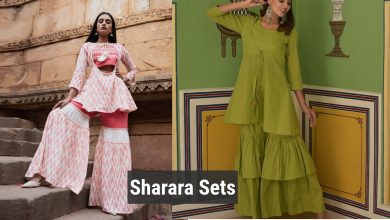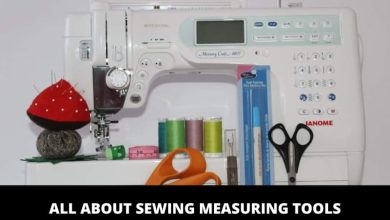Frequently Asked Questions About Corsets

Check out a list of a few FAQ’s about corsets that you might want to know before investing in a corset. Also, if you are looking for some good quality corsets at throwaway prices then don’t forget to check out https://www.truecorset.com/
Is wearing a corset painful?
No, that shouldn’t be the case. Wearing a corset is not dangerous if you follow what we refer to as “safe and sane corseting practices.” This entails locating a corset that is appropriate for your body type. Corsets are not only completely safe when worn correctly, but they can also help with back pain and posture correction. We’ve spoken with women who use corsets for back support after injuries, and we know a lot of women who use them for good posture while sitting for long periods of time at work.
How to know the size of the corset that fits you?
You’ll need to determine your size as well as the best style for your body type. Corset sizes range from size 16 to size 46, based on the corset’s closed waist measurement (in inches).
Is a corset different from a bustier?
Corsets and bustiers are frequently mixed up. What is the distinction between the two? A corset cinches your waist, whereas a bustier accentuates your breasts.
A bustier is a fancy bra combined with shapewear that smooths the midsection and lifts the breasts. Bustiers typically have a hook and eye closure, similar to a bra, and only have laces for the show, if at all. Plastic boning is also used to smooth the fabric and keep it in place. Corsets have spiral steel bones in them to help maintain vertical tension and create that desired hourglass curve. They are tightened with a combination of rear laces and a front steel busk closure.
Is a waist trainer the same as a corset?
To define those shaping garments that target the abdomen specifically, waist cinchers and latex waist trainers are used. The resemblance to corsets stops there.
A waist cincher is designed to provide a slimming and smoothing effect underneath your clothes by removing an inch or two from your waistline while you’re wearing it. Corsets, on the other hand, can be worn over or under your clothes and are designed to give you that hourglass figure by instantly reducing your waist size by 3 to 6 inches, depending on your body type and how easily compressible your midsection is.
What other types of fabric can I choose?
You’ll probably consider which fabric is best once you’ve determined your size and style. All of the fabrics are stunning and made of extremely durable materials. However, each fabric has advantages and disadvantages, and one may be a better fit for you than the others.
Satin
We recommend satin if you plan to wear your corset under your clothes. Rather than clinging to your clothing, a satin corset allows it to glide over it like a slip under a dress. Satin looks great over clothes and gives them a polished look. If you have pets, the satin material may be ideal for you because pet hair is less likely to cling to the outer material.
Mesh
Mesh is a breathable, lightweight fabric. It’s comfortable, easy to wear under or over clothing, and it keeps you cool during the hot summer months. It also gives you a great silhouette because the corset is so light. Style your corsets with these rings.
Cotton
Cotton is the fabric for you if you prefer casual comfort. Cotton takes a little longer to a break in, but once it does, it’ll be as comfortable and easy to wear as your favorite pair of denim jeans. Because of the thicker fabric, wearing cotton corset underclothes is a little trickier, but not impossible.
Brocade
The brocade fabrics are a beautiful, thick polyester blend that has a tapestry or upholstery feel to them. They are more elegant than plain fabrics and can add a little something extra to your ensemble. Brocade is a thick, woven fabric that requires more wear to feel as comfortable as a thinner fabric but once broken in, it will be a comfortable and classy addition to your wardrobe.
Leather
The lambskin leather we use is extremely supple. It’s a material that feels good almost instantly. When most people think of cowhide leather fabrics, they think of stiff and rigid leather. Lambskin isn’t like that. Although your clothes would not cling to this fabric if you wore it under them, it does have a bit more major portion to it, so it’s better to wear it over your clothes and flaunt it. However, because leather is a natural skin that can stretch out slightly over time, we don’t recommend doing daily waist training in your leather corsets.
How do I put my corset on?
- Before you put your corset on, make sure the laces are completely loose.
- Determine the location of the garter tabs or the knot in the laces, both of which are located along the bottom of the corset, to determine the right side up.
- Place the hooks and pins in the front and the laces in the back of the garment and wrap it around your body. If you’re wearing the corset right side up, the straps will be in your right hand and the pins will be in your left.
- Make sure all of the stainless steel hooks and pins in the front are securely fastened.
- Then clamp the laces by trying to pull on the back pull loops and the laces’ x’s.
How do I take my corset off?
Before trying to unclasp the busk, make sure the laces in the back are completely loose. Remove the stainless steel hooks and grommets from the front of the corset gently.
How can you clean a corset?
- If your corset needs to be cleaned, we recommend taking it to a reputable dry cleaner. Never put your corset in the washing machine or submerge it completely! Spot clean with a damp cloth and mild detergent, or disinfect with a disinfectant wipe and dry.
- Use a base coat and store your corset properly to get the most wear out of it. Our corset liners will keep your corsets cleaner for a longer period of time! Natural skin oils and moisture are kept out of your corset by a layer between you and it.
- After each wear, air out your corset by positioning it lining side up and centering it over a hanger or chair. Between cleanings, a limited fraction of fabric freshener can be used on the inside lining only. Before storing, make sure it’s completely dry.
- Sunlight can damage the fabric of your corset, so never dry it outside. Beautiful fabric storage boxes designed specifically for your corsets are available.




